8 Yoga Poses for Better Digestion
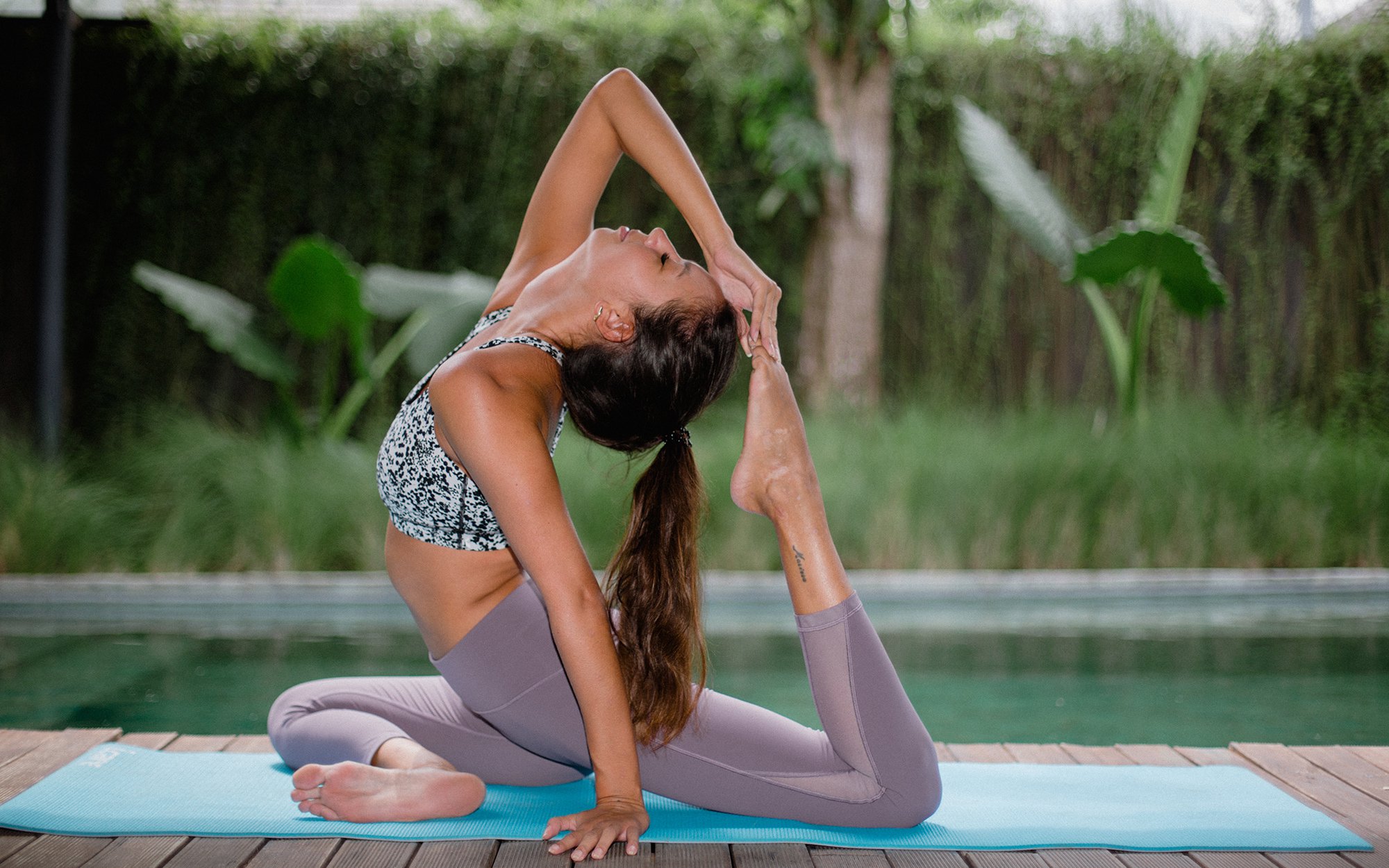
Updated December 10, 2018.
Studies have shown that practicing yoga can have a profound impact on stress and anxiety levels, and then there are the obvious physical perks of improved balance, flexibility, and strength. But did you know certain asanas (poses) can also ease digestive woes?
To understand how that’s possible, let’s review a bit of human biology. The system that regulates the body’s involuntary functions including breathing, heart rate, digestion, and more is known as the autonomic nervous system (ANS). That system is divided into the sympathetic and parasympathetic systems.
How the Nervous System Handles Stress
The sympathetic system allows the body to function under stress and is responsible for what’s known as the “fight-or-flight response.” If you’ve ever noticed your heart rate and breathing quicken at the first sign of stress, you’ve experienced a fight-or-flight reaction.
“Most of us live with some or a lot of stress,” says One Medical’s Carrie Bowler, DO. “Stress drives the sympathetic system and the fight-or-flight response. And too much of it can lead to either constipation or diarrhea for many people.” Excess stress can also cause pain, bloating, nausea, and cramping in some people.
When your sympathetic nervous system is activated, that fight-or-flight response slows or stops digestion so the body can use all of its energy to face whatever threat it’s perceiving (even if that threat is a tight deadline at work, and not an imminent physical danger). The sudden standstill can cause abdominal pain or other symptoms.
Conversely, the parasympathetic system is what’s responsible for calming and relaxing the body, slowing the heart rate and breathing, among other things.
How Yoga Can Help
“I think the main reason that yoga poses might aid with digestion is that they focus on parasympathetic activation, which aids in digestion,” says One Medical’s Daniel Dinenberg, MD. “Also, some movements increase peristalsis–the movement of food through the intestines.”
“By decreasing stress and adding some calm into our day with yoga, we calm the sympathetic nervous system, too,” Bowler adds. “This can help regulate digestion. More specifically, any pose, like a twist, that applies gentle pressure to the abdomen is something like a massage for our intestines.”
Yoga teachers Allison Hodge and Kate Schwabacher suggest the following digestion-friendly moves that even yoga newbies can try. Here are their top choices:
1. Peacock Prep
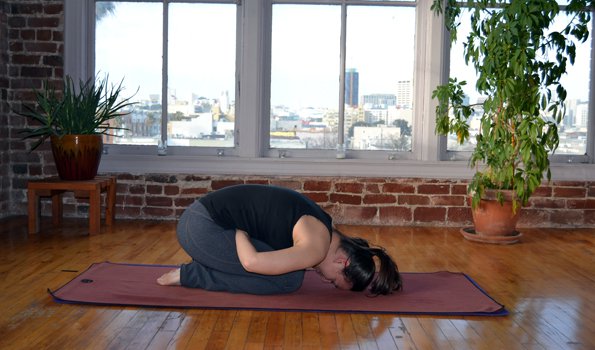
Take a child’s pose (kneel on floor with knees slightly apart, sit back on heels, rest chest on thighs, forehead on ground). Place fists under belly.
“This pose has a similar effect as the full peacock pose, where you balance on your hands with your elbows in your guts, but it’s a whole lot easier,” says Schwabacher.
2. Goddess Pose
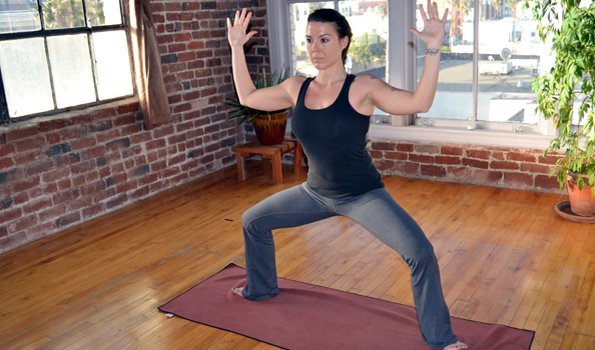
Take a wide stance with toes out and heels in, bend knees deeply and sink hips down to height of your knees. Bring arms out at shoulder height and bend elbows so fingertips point up. Engage core and draw tailbone toward floor.
“By holding goddess pose, you’ll grow warm, which will improve your circulation and improve digestion. Use this pose to feel grounded,” advises Schwabacher.
3. Malasana the Squat
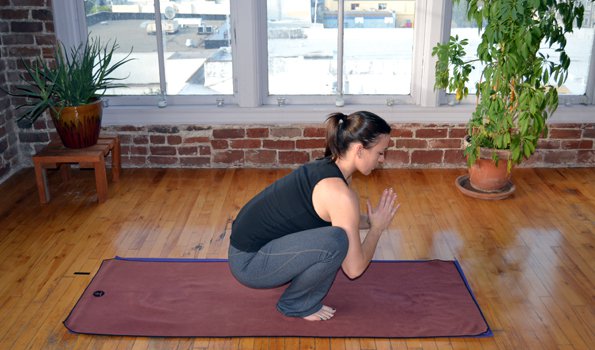
Squat with feet as close together as possible, keeping heels on the ground, if you can. Separate thighs slightly wider than torso, lean forward, and press elbows against inner knees, bringing palms together.
“Malasana has many of the same benefits of Goddess, but with the addition of pressure on the abdomen,” explains Schwabacher.
4. Jathara Parivartanasana, a reclined twist with bent knees
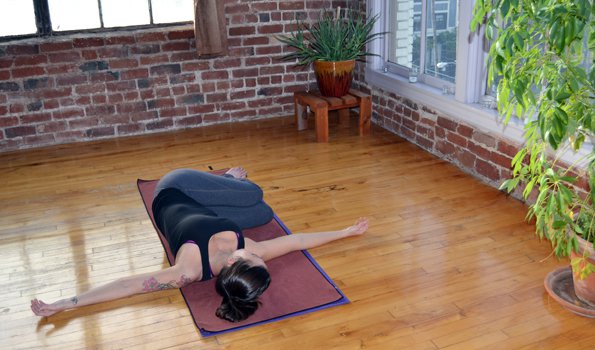
Lie down, draw knees into your chest and drop them to the right as you open arms into a T-shape. Turn your face to the left.
According to Schwabacher, “When your stomach feels tied up in knots, this pose will help relax your abdomen while encouraging food to move on through. It’s the perfect before-bed pose.”
5. Left-Side Lying Savasana (aka Corpse Pose)
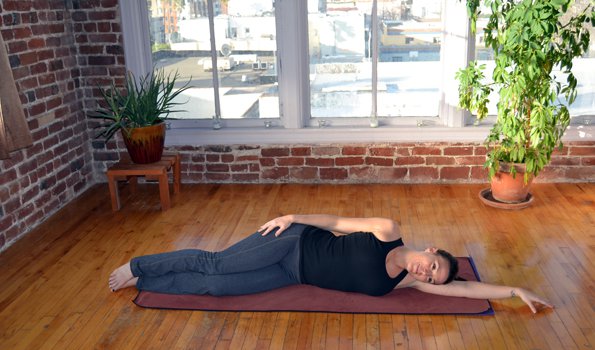
Take ten minutes after a big meal to lie on your left side and relax. If you’re not able to lie down, just close your left nostril and breathe through your right for 10 to 20 breaths for a similar effect.
“This will open the pingala nadi (digestive/solar channel). Lying on your left side opens up the right side, the digestive-oriented side,” says Schwabacher.
6. Apanasana (aka Knees-to-Chest) Pose
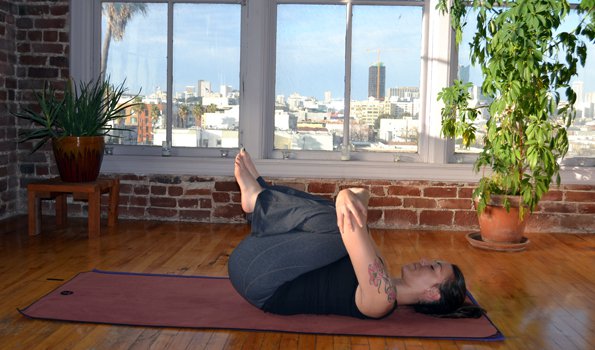
Reclining on your back, draw your knees in toward your chest.
“You can also keep the knees together and circle them to each side to massage the abdominals and low back,” says Hodge.
7. Cat/Cow Pose
Get in a “tabletop” position on your hands and knees with your knees directly below your hips and your wrists, elbows, and shoulders in alignment. Keep your head centered. As you inhale, lift your chest and the bones in the underside of your seat (your “sits bones”) up, and let your belly drop. Lift your head. As you exhale, round your spine and release your head.
“This pose is good for stimulating the digestive system as it gently massages the abdominal organs,” explains Hodge.
8. Bridge Pose
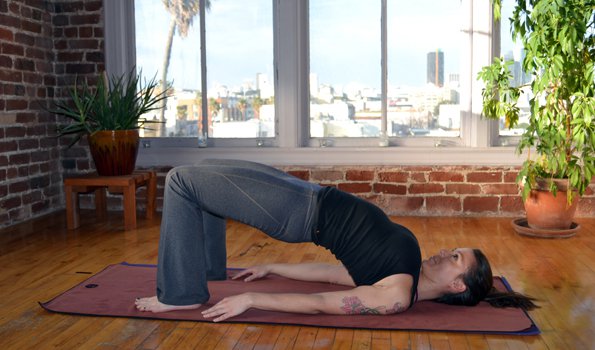
Lying down on the floor, bend your knees, and keep your heels close to your sits bones. While you exhale, press your feet and arms into the floor and lift your pelvis up while keeping your thighs and feet parallel.
According to Hodge, “Bridge pose stimulates and stretches the abdominals while bringing the organs into better alignment. It also stimulates the thyroid, which is important for digestion and metabolism.”
Special thanks to model, One Medical’s Kareen Patterson.
Looking for ways to stretch your spine? Check out more by clicking on the yoga tag.
The One Medical blog is published by One Medical, a national, modern primary care practice pairing 24/7 virtual care services with inviting and convenient in-person care at over 100 locations across the U.S. One Medical is on a mission to transform health care for all through a human-centered, technology-powered approach to caring for people at every stage of life.
Any general advice posted on our blog, website, or app is for informational purposes only and is not intended to replace or substitute for any medical or other advice. 1Life Healthcare, Inc. and the One Medical entities make no representations or warranties and expressly disclaim any and all liability concerning any treatment, action by, or effect on any person following the general information offered or provided within or through the blog, website, or app. If you have specific concerns or a situation arises in which you require medical advice, you should consult with an appropriately trained and qualified medical services provider.